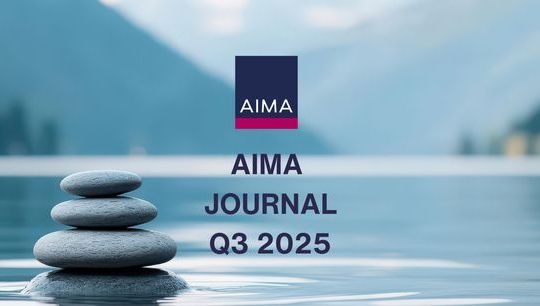How innovations driven by pure mathematics can unlock R&D tax relief
By Oliver Grose, Leyton
Published: 24 November 2025
Success in the alternative investment industry often comes down to one thing: innovation. Technology must develop at pace to help keep up with increasingly unpredictable geopolitical events.
Developments in mathematical modelling, algorithmic design, and AI-driven breakthroughs are central to tackling uncertainty, volatility and market complexity. They are all also potentially eligible for tax reliefs in the form of research and development (R&D) tax credits.
R&D incentives are available from governments worldwide, but it’s only within the last couple of years that innovative projects using mathematical sciences have become eligible for R&D tax relief in the UK. As the change is relatively new, there is still a lot of uncertainty around what is considered R&D for tax purposes.
Background
To be eligible for R&D tax relief, a project must look for a scientific or technological advance. Since April 2023, the guidance for claiming has been updated to include ‘pure mathematics’, effectively recognising that advanced maths doesn’t just tackle abstract concepts, it also has very practical applications for driving business innovation.
For anyone working on such projects, the implications are huge. Especially as the UK Government’s definition of pure mathematics is tantalisingly broad:
“Pure mathematics involves the exploration of new mathematical concepts, the development of new theories and techniques and the discovery of new mathematical relationships and patterns. This can involve the development of new mathematical models, the study of mathematical structures and symmetries, and the exploration of the foundations of mathematics itself.”1
If your work qualifies, you can claim a tax credit for certain expenses like employee comp, consumables, software, data licences, cloud computing and other R&D-related spend.2 For those working on multiple innovative projects with large teams of quants or other engineers and scientists, this can add up to a significant amount of tax relief.
R&D relief isn’t just for software projects
From our experience speaking with fund managers, we know that there’s a lingering sense that R&D tax relief is only available for larger, more software-oriented development projects, such as building a new trading platform.
But the revised eligibility rules mean that the opportunity for claiming is so much larger than this – especially for an industry currently focused on leveraging the potential of artificial intelligence, a technology reliant on pure mathematics.
For instance, quants are always trying to beat the market by developing their models and algorithms, driving technological improvements in areas such as hedge funds and alternative credit. Any such projects that follow a plan with clear steps to help resolve an uncertainty and arrive at an advancement, may qualify as R&D for tax purposes.
Understanding the boundaries of R&D
Of course, innovation within investment R&D often doesn’t come from a single project. It’s an ongoing, iterative process of advancement, which adds to the confusion over which activities qualify for relief. Routine work isn’t eligible, so it’s important to be able to identify the boundaries of R&D.
A quant team’s activities can be broken down into routine non-qualifying work, and non-routine R&D activities that are eligible for tax relief.
Much of their work is operational, involving tasks like monitoring risk exposures, adjusting portfolios, or developing pricing strategies. While these activities are critical, and involve a high level of expertise, they wouldn’t be called R&D because they’re routine.
Qualifying R&D activities, on the other hand, involve a systematic process of testing and learning to overcome an uncertainty. This might include projects that lead to the development of new machine learning models to improve the estimation of stochastic volatility. It’s the sort of work that goes far beyond simply using off-the-shelf solutions.
It could also involve developing new methods to more efficiently source, clean, back-test, and simulate the massive datasets that are needed for training and validating AI models. For example, a company might develop a new approach to ingest and interpret sporadic, asynchronous data from multiple sources with the aim of improving the accuracy of predictions.
Another example could be creating new AI-powered algorithms to support companies that handle large trades, where the goal is to execute transactions discreetly without affecting the market.
It’s not the specific type of R&D that’s important, it’s whether or not you have improved something, created something new, or learned something that wasn’t known before. A good test of this would be if a competent professional in the field would agree that your work has made an appreciable advance.
Based on internal data gathered by Leyton, the average benefit per company for claims of this nature is approximately £576,000, highlighting the scale of potential value available to qualifying businesses.
Conclusion
The finance and insurance industry was the fifth-largest contributor to the UK’s economic output in 2023, accounting for 8.8% of GVA.3 And yet, the industry was the tenth when it came to the total number of R&D tax credit claims for the tax year 2022 to 2023, barely accounting for 2% of all claims.4 For an industry that relies so heavily on innovation, something isn’t adding up.
The most likely explanation is that a lack of awareness of the pure maths eligibility criteria is resulting in companies missing out on tax credits to which they’re completely entitled. For those already claiming for their flagship projects, significant value might be added to existing claims.
But there will also be many who have never explored the possibility of claiming tax relief for their R&D, and there is a real opportunity here to improve tax efficiency and secure government funding that can be used for further R&D.
As a driver of cutting-edge breakthroughs, alternative investment as an industry is ideally placed to gain from a better understanding of the qualifying criteria for R&D tax relief, especially if it recognises the potential value of claims.
1. HMRC, Research and Development (R&D) tax reliefs – draft guidance update, April 2023 https://www.gov.uk/government/consultations/draft-guidance-research-and-development-rd-tax-reliefs/outcome/research-and-development-rd-tax-reliefs-draft-guidance-update
2. You can find out more about the eligibility criteria for R&D tax credits here: https://leyton.com/uk/r-and-d-tax-credits/
3. House of Commons Library, Industries in the UK, October 2024 https://commonslibrary.parliament.uk/research-briefings/cbp-8353/
4. HMRC, Research and Development Tax Credits Statistics: September 2024, September 2024 https://www.gov.uk/government/statistics/corporate-tax-research-and-development-tax-credit/research-and-development-tax-credits-statistics-september-2024
It’s not the specific type of R&D that’s important, it’s whether or not you have improved something, created something new, or learned something that wasn’t known before. A good test of this would be if a competent professional in the field would agree that your work has made an appreciable advance.









